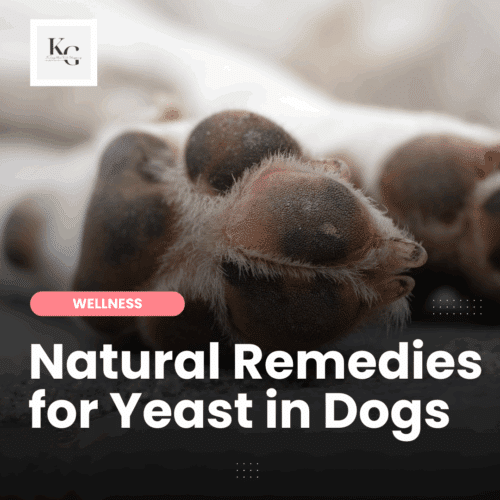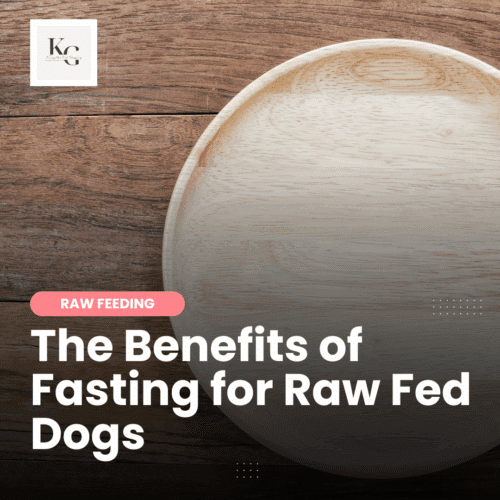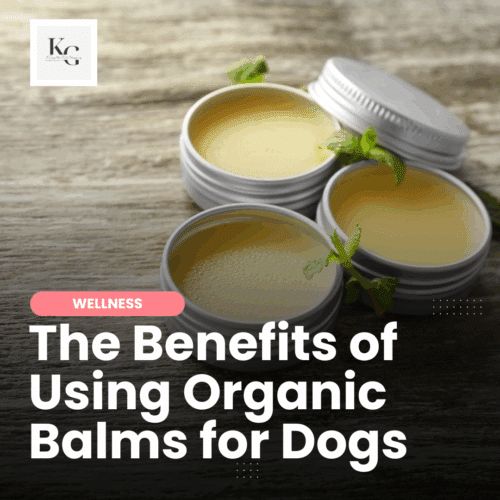Keep the Tail Wagging is supported by pet parents. I occasionally earn a commission (at no additional cost to you) when you click through an affiliate link to one of my favorite products. Thank you for your support. Read More
Dog owners understand the practice of raw feeding is an attempt to replicate the ancestral diet of dogs by combining muscle meat, organ meat, bones, and vegetation while acknowledging that our dogs have evolved to be pets, not wolves. We feed raw because fresh food is more bioavailable and supports a healthy gut and immune system, which promotes longevity. Someone new to raw feeding may not know several raw feeding models exist. In this article, I share five popular models, the pros and cons of each, and the raw feeding model I follow with my dogs.
The models discussed are:
- Premade (Commercial) Raw Dog Food
- Prey Model
- BARF Model
- Ancestral
- Rotational Mono-Feeding
A hybrid diet is a combination of one or more of the above diets.
What's a Raw Feeding Model?
A raw feeding model is a general guideline for dog owners to follow when feeding a raw food diet. Prey Model was the first, then BARF was developed by dog owners and veterinarians who felt that vegetation was important for a dog's diet. Additional raw feeding models were developed as people sought to tailor a diet to their dog's individual needs.
Raw feeding models are followed because…
- they give dog owners a starting point when transitioning to raw (or DIY raw).
- they don't believe anyone has successfully mapped out what a dog needs nutritionally, so they'd instead attempt to replicate the grey wolf's or wild canine diet.
- they are similar to a recipe, providing the amount of each ingredient to add to the bowl.
Raw feeding models are an excellent starting point; however, I'm afraid I have to disagree that a model equates to “balance.” It wasn't until I added a base mix to my DIY raw blends that I could confidently state that the diets I formulated met the nutritional needs of my dogs, after confirming with hair analysis testing and working with a certified nutritionist. Therefore, raw feeding models are an excellent start, but dog owners must remain open to new information and continue to educate themselves about canine nutrition.
1 – Premade Raw Dog Food
Premade raw isn't considered a “model” of raw feeding, but with the growth of the raw sector over the years, I think it deserves mention. Premade raw dog food refers to commercial raw that we find at local, independent pet stores, order online or buy directly from brands. This is an excellent option for people who are new to raw feeding because it allows you to immediately transition to raw and take the time to educate yourself if you'd like to feed DIY eventually. Commercial raw is the most convenient model of raw feeding.
Pros of Premade (Commercial) Raw
- We don't have to worry about balancing the diet.
- Access to more proteins.
- You don't need to buy extra freezers to store bulk orders unless you have a lot of big dogs.
- Feeding dogs is quick and easy and creates little mess because premade raw can be fed in a dog dish.
- Some brands deliver to your door.
Cons of Premade Raw
- Some premade raw brands use HPP (high-pressure pasteurization) or another kill step to reduce bacteria. While this process makes raw feeding accessible to more people, the raw feeding community disagrees about these steps. Some feel that a kill step destroys the good bacteria in raw food, while others believe it makes raw feeding safer.
- Feeding premade raw is expensive because the brand handles the formulation, sourcing, packaging, and, in some cases, delivery.
- Some premade raw brands use synthetic vitamins to make the diet nutritionally complete. Depending on the amount used and the sourcing, this can be negative. Synthetic vitamins are less bioavailable than nutrients from fresh food.
- Some premade raw brands can't always source from organic farms; the potential of feeding meat that originated from factory farms is a deal breaker for some raw feeders.
- Not all commercial raw brands formulate for puppies or all-life-stages; when feeding puppies, it's important to clarify which brands/formulations are best.
2 – Prey Model Raw Feeding
The Prey Model aims to replicate a dog's natural diet in the wild, where they consume whole prey animals. It emphasizes feeding dogs a diet that closely mimics the ratios and composition of a prey animal, typically consisting of muscle meat, bones, organs, and sometimes small amounts of vegetation. This model does not include fruits, vegetables, or commercial supplements, as it aims to provide all necessary nutrients solely through whole prey.
Prey model raw is the “old school” model of feeding, and it includes:
- 75%-80% muscle meat
- 10%-12% bone
- 5% liver
- 5% offal (secreting organs like kidney and spleen)
- 5% fiber: fur/feathers
The original theory behind this model was to feed the entire animal, from head to tail. However, this isn't possible for everyone. Dog owners who follow the Prey Model may meet the above percentages using different animals, a method called “FrankenPrey.” For example, we'll feed pork as muscle meat, beef organs, duck wings for the bone, and rabbit fur. Prey model raw is great for people with connections with hunters, homesteaders, and local farms.
Pros of Prey Model Raw
- Dogs eat in a way that is more reminiscent of wolves or wild canines; while we understand that dogs aren't wolves, this model may be more appealing for dog owners trying to replicate a “species-appropriate” diet.
- Whole raw allows dogs to satisfy their chew drive, clean their teeth, and work their jaw and shoulder muscles.
- Because dogs eat whole raw foods, they take longer to finish their meals, which is great for their digestive systems.
Cons of Prey Model Raw
- Canine nutritionists have found that the Prey Model lacks nutrients such as Omega-3 fatty acids, zinc, and some vitamins.
- Additional freezer space may be required because whole raw is bigger than ground, taking up more space.
- Because whole raw is preferred, ground raw may be discouraged in some raw feeding groups.
- Feeding whole raw can be challenging for some people/dogs due to the mess, the space, and a dog owner's squeamishness.
The Prey model discourages using vegetables, fruit, dairy, and over-supplementation because dogs can get everything they need through diet. For example, instead of fish oil, feed sardines and mackerel. Instead of a digestive supplement, trust the living enzymes in raw food and add green tripe. To be clear, some prey model raw feeders aren't strict on ingredients.
3 – BARF Model Raw Feeding
The BARF (biologically appropriate raw food or bones and raw food) model, credited to Australian veterinarian Dr. Ian Billinghurst, promotes a more balanced approach to raw feeding. It involves feeding a variety of raw meats, bones, organs, fruits, vegetables, and sometimes dairy products. BARF aims to provide a balanced and complete diet focusing on replicating the evolutionary diet of dogs.
BARF model of raw feeding is what many commercial brands follow, and it includes:
- 65%-75% muscle meat
- 10%-15% bone
- 5% liver
- 5% offal (secreting organs like kidney and spleen)
- 5%-10% vegetables, seeds, fruit, dairy
If you search ratios for the BARF model, you'll find several ranges because raw feeders slightly adjust the ratios to meet the individual needs of their dogs. The BARF model seems to make the most sense to new raw feeders, and it's an excellent option for dog owners who want to start the journey into understanding how to balance the macro/micronutrients in their dog's diet.
Pros of the BARF Model
- Adding vegetables, fruit, seeds, and supplements gives dogs more access to antioxidants, fiber, and other nutrients.
- It is easier to meet your dog’s nutritional needs because vegetation and supplements are acceptable.
- Ground raw dog food is acceptable and more manageable (and cleaner) to feed.
- Raw meaty bones and recreational bones are added separately for teeth cleaning.
- There's little pressure to meet a dog's nutritional needs by feeding one whole animal, such as a rabbit or chicken. Following the BARF model, dog owners often source from various animals (see the example recipe below).
Cons of the BARF Model
- Dogs eat faster because ground raw dog food encourages gulping in some dogs.
- Ground raw doesn’t offer the teeth-cleaning benefits of eating whole raw. It's still important to take additional steps to support dental health for some dogs.
- Additional (or dedicated) freezer space may be needed to accommodate bulk orders, which makes raw feeding more affordable.
- Some dogs won't eat vegetables.
- You might need to invest in a meat grinder if you feed DIY.
4 – Ancestral Diet Model
The Ancestral Model of raw feeding focuses on replicating the dietary patterns of dogs' ancestors, such as wolves. It emphasizes a prey-based diet consisting of raw meat, bones, organs, and minimal fruits and vegetables. This model aims to imitate wild canines' natural, carnivorous diet, reflecting their evolutionary adaptation to raw foods.
Raw feeding models rarely mention seafood, which has its place in a dog's raw diet. Seafood is an excellent source of Omega-3 fatty acids and many vitamins and minerals. The Real Ancestral Diet ™, formulated by the Feed Real Institute, includes feeding six essential components.
- 63-65% muscle meat
- 10% seafood
- 10-12% raw meaty bone
- 5% liver
- 5% secreting organs
- 5% fiber: fur/feathers, vegetables
As a raw feeder, the Ancestral Model makes the most sense to me because it covers everything I feed to my dogs. The Feed Real Institute makes it easy to follow.
Pros of the Ancestral Model
- This is a great alternative to Prey Model Raw. We're feeding a model that is reminiscent of what a wild canine or wolf would eat while also better meeting their nutritional needs by adding seafood and vegetables.
- This model is focused on ingredients, not whole/ground. Dog owners can feed a combination of proteins while mixing whole and ground in one meal, making this model more flexible and convenient.
Cons of the Ancestral Model
- Additional (or dedicated) freezer space may be needed to accommodate bulk orders, which makes raw feeding more affordable.
5 – Rotational MonoFeeding (RMF)
Rotational MonoFeeding (RMF) is a diet I was introduced to in 2021, and I considered switching my dogs to this model because I agree with several tenets. RMF is a model created by Nora Lenz that follows the belief that dogs have one chamber in their stomach to digest food, so they should be fed meat separately from vegetables.
Nora Lenz took inspiration from wild canines and wolves and, through RMF, encourages pet parents to feed meat on one day (the kill), vegetables (foraging), and fasting (when food is unavailable). The Rotational MonoFeeding book offers several feeding regimens based on pet parents’ goals for their dogs.
Pros of Rotational MonoFeeding
- Incorporates fasting in the diet.
- Meal prep is more straightforward since this appears to be primarily a plant-based diet.
- There isn’t stress about ” balancing” the diet because it appears to be primarily focused on “foraging.”
- A 50 lb protein order will last longer since dogs primarily eat a plant-based diet.
Cons of Rotational MonoFeeding
- The diet will not meet your dog’s nutritional needs; balancing the diet can be challenging.
- Supplements, bone broth, and fat (coconut oil, fish oil, raw goat’s milk, kefir) are discouraged.
- Feeding meals of sweet potatoes or fruit meals is questionable – is this species appropriate?
I’m new to RMF, and while I find some of Nora Lenz's beliefs compelling and, in some cases, spot on, I don’t believe that a complete adaptation of Rotational MonoFeeding would be appropriate for my dogs.
Choosing the Right Model for Your Dog
All raw feeding models will have a community that follows all or most of its tenets with varying degrees of success. I learned as much as possible about each model, tried them with my dogs, and finally settled on a modified model incorporating everything I knew. This model best fits my dogs, my budget, and our geographical location (for sourcing).
I took inspiration from several raw feeding models – BARF, Prey, Ancestral, and RMF – when formulating my dogs' diet:
- BARF – vegetables/base mix
- PREY – 80/10/10, whole raw
- ANCESTRAL – fish/seafood, fur
- RMF – fasting
I remain flexible and open to new ideas because, as my dogs age, their nutritional needs change, we may adopt a dog with different needs, or my resources may change.
Where to Source Ingredients
Once a dog owner determines which raw feeding model best fits their dog, it's time to find sources for the various ingredients. The following is a list of ideas for getting everything needed to make a healthy raw food diet for your dog.
Muscle Meat, Organ Meat, and Bones
- raw food co-op
- outlet grocery store
- restaurant supply store
- local farms/homesteaders
- ethnic grocery stores
Seafood (Sardines, Mackerel, Salmon, Oysters, Mussels)
- outlet grocery store
- restaurant supply store
- Real Dog Box
- raw food co-op
- ethnic grocery store
Fur, Feathers, and Vegetables
- Real Dog Box
- my container garden
- grocery store
- local farms/homesteaders
- Farmer's Market
Consider taking the Feed Real Dog Food Nutrition course to learn more about feeding a raw food diet. It's an online course that covers everything about raw feeding in an informative yet easy-to-follow manner.






